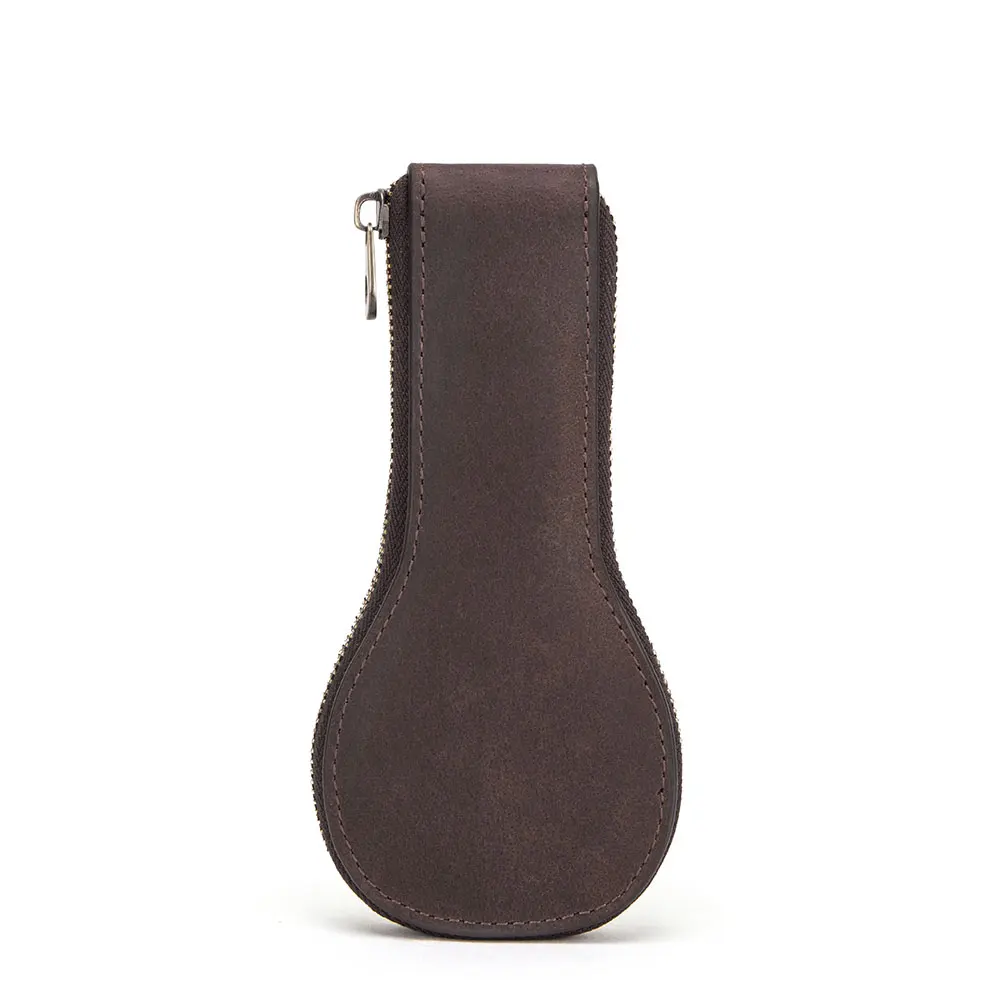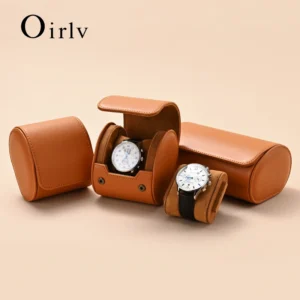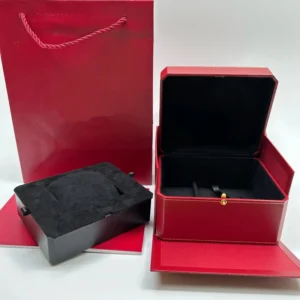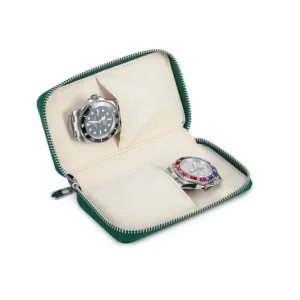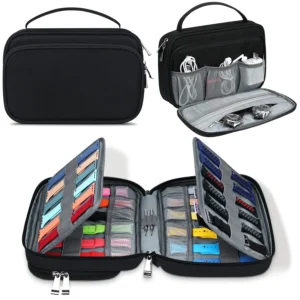Understanding Leather Watch Cases and Their Importance
Leather watch cases represent the perfect marriage of functionality and elegance. These premium accessories serve a crucial purpose beyond mere storage—they protect valuable timepieces from dust, scratches, humidity, and other environmental factors that could compromise their performance or appearance. Whether you own a single cherished watch or an extensive collection, the quality of your storage solution directly impacts the longevity of your timepieces.
Proper care of leather watch boxes isn’t just about maintaining their appearance—it’s about preserving value. A well-maintained leather case can last for decades, developing a beautiful patina that enhances its character while continuing to provide optimal protection for your watches. Conversely, neglected leather can crack, fade, and deteriorate, potentially compromising the very timepieces it’s meant to protect.
Different types of leather require specific approaches to care and maintenance:
- Full-grain leather – The highest quality option, featuring all natural grain with unique markings and exceptional durability
- Top-grain leather – Slightly processed for more uniform appearance while retaining good durability
- Saffiano leather – Recognizable by its cross-hatch pattern and treated for scratch and water resistance
- Nappa leather – Incredibly soft and supple with minimal processing for a luxurious feel
- Exotic leathers – Including ostrich, crocodile, or lizard, which require specialized care approaches
Understanding the leather aging process helps you appreciate why consistent maintenance matters. As leather ages, it naturally loses oils and moisture, making regular conditioning essential. The aging process can either enhance a case’s appearance—developing that coveted patina—or lead to deterioration if proper care is neglected.
This comprehensive guide will walk you through everything you need to know about caring for your leather watch cases—from essential tools and cleaning techniques to conditioning methods and protection strategies. By implementing these practices, you’ll ensure your premium watch cases remain as impressive as the timepieces they protect.
Essential Tools and Products for Leather Watch Case Maintenance
Proper leather care begins with having the right tools at your disposal. Think of these items as your leather maintenance toolkit—essential elements that enable you to clean, condition, and protect your watch cases effectively.
Cleaning Tools
A successful cleaning routine starts with gentle implements that remove dust and dirt without damaging the leather surface:
- Microfiber cloths – These soft, lint-free cloths are perfect for dusting and gentle cleaning without scratching leather surfaces
- Soft-bristled brush – Ideally horsehair, which effectively removes dust from seams and corners without abrading leather
- Cotton swabs – For reaching tight crevices and detailed areas where dust collects
Cleaning Products
When selecting cleaning products for leather watch boxes, look for gentle formulations specifically designed for fine leather:
- Leather cleaner – Choose pH-balanced, non-detergent formulas specifically designed for fine leather
- Distilled water – Regular tap water can contain minerals that may leave deposits on leather surfaces
- Leather soap – Traditional saddle soap works well for deeper cleaning when necessary
Conditioning Products
The heart of leather maintenance lies in proper conditioning:
- Leather conditioner – Look for products containing natural oils like lanolin or beeswax
- Leather cream – Provides both conditioning and a protective layer with minimal shine
- Leather balm – Typically thicker than cream, offering deeper conditioning for drier leathers
Protection Tools
These items help shield your leather from environmental damage:
- Leather protectant spray – Creates an invisible barrier against moisture and stains
- Dust covers – Protect cases when not in use
- Soft storage bags – For additional protection during travel or storage
Products to Avoid
Certain household products can severely damage fine leather and should never be used on watch cases:
- Alcohol-based cleaners
- Ammonia-based products
- Household detergents
- Furniture polish
- Petroleum-based products
- Silicone-based conditioners
- Baby wipes
- Vinegar solutions
When selecting products, always choose quality over convenience. Inexpensive, all-purpose cleaners often contain harsh chemicals that can strip leather of its natural oils, leading to drying and cracking. Similarly, some mass-market conditioners may contain petroleum derivatives that provide a temporary shine but cause long-term damage.
For the best results, conduct a patch test with any new product on an inconspicuous area of your watch case before applying it to the entire surface. This simple precaution can prevent potentially irreversible damage to your valuable leather goods.
Step-by-Step Guide: Cleaning Your Leather Watch Case
Proper cleaning forms the foundation of leather care. Following a methodical approach ensures you’ll remove dirt and grime without damaging the leather’s surface or finish. Here’s how to clean your leather watch case effectively:
Preparation
Before beginning the cleaning process:
- Remove watches from the case to prevent any accidental exposure to moisture or cleaning products
- Empty all compartments and open any drawers or sections
- Place the case on a clean, flat surface with good lighting
- Inspect thoroughly for specific stains, marks, or problem areas
- Identify the leather type if possible, as this may influence your cleaning approach
Dust Removal
Always begin with dry cleaning to remove loose particles:
- Gently wipe the entire surface with a dry microfiber cloth, working in straight lines rather than circles
- Use a soft brush to carefully dislodge dust from seams, corners, and textured areas
- For intricate areas or hardware details, use cotton swabs to reach crevices
- Pay special attention to hinges and closure mechanisms where dust accumulates
Surface Cleaning
For regular maintenance or light soiling:
- Slightly dampen (not wet) a clean microfiber cloth with distilled water
- Test on an inconspicuous area first
- Wipe the leather surface using gentle, straight motions
- Allow to air dry completely away from direct heat or sunlight
- Never saturate the leather with water
Deep Cleaning
For stubborn stains or when leather watch cases require thorough cleaning:
- Apply a small amount of leather cleaner to a clean cloth (never directly onto the leather)
- Work in small sections using gentle circular motions
- Avoid excessive pressure or rubbing
- Wipe away any residue with a separate clean, slightly damp cloth
- Allow the case to dry completely (typically 2-4 hours) before proceeding to conditioning
- Never use a hairdryer or place near a heater to speed drying
Special Stain Removal
For specific stains:
- Water spots: Allow to dry completely, then condition
- Oil marks: Blot (don’t rub) with a clean cloth, then apply cornstarch to absorb oils
- Ink stains: Consult a professional, as home remedies often make these worse
- Mold or mildew: Wipe with a cloth dampened with a very diluted isopropyl alcohol solution (test first), then dry and condition immediately
Safety Precautions
- Never submerge leather in water
- Avoid getting moisture inside the case where it can damage linings or cause mold
- Keep cleaning products away from hardware elements that may tarnish
- Work in a well-ventilated area when using any cleaning products
- Always read and follow manufacturer’s instructions for any leather care products
The cleaning process should leave your leather case free of dirt and prepared for conditioning, but should never leave it feeling wet or saturated. If your case feels damp after cleaning, you’ve used too much moisture and should adjust your technique for future cleanings.

Conditioning and Moisturizing for Leather Longevity
Conditioning is perhaps the most crucial aspect of leather care. While cleaning removes harmful substances from the surface, conditioning replenishes essential oils that keep leather supple, preventing the dreaded cracking and drying that can ruin a beautiful watch case.
The Science of Leather Conditioning
Leather is a natural material composed primarily of collagen fibers. These fibers contain natural oils that provide flexibility and resilience. Over time, these oils deplete through:
- Exposure to air (oxidation)
- Fluctuating humidity levels
- Regular handling
- Cleaning processes that remove surface oils
Without replenishment, leather becomes increasingly brittle. Conditioning reintroduces oils similar to leather’s natural composition, maintaining its suppleness and preventing permanent damage.
Selecting the Right Conditioner
Different leather types require specific conditioning approaches. When deciding whether to oil leather watch storage, consider these factors:
- Leather type – Full-grain absorbs more conditioner than processed leathers like Saffiano
- Leather color – Lighter leathers may darken with certain conditioners
- Finish – Heavily finished leathers require less frequent conditioning
- Climate – Drier environments necessitate more regular conditioning
Quality conditioners typically contain natural ingredients like:
- Beeswax
- Lanolin
- Neatsfoot oil
- Jojoba oil
- Mink oil (for weather resistance)
Avoid products containing:
- Silicone
- Petroleum derivatives
- Excessive waxes that can build up over time
Application Technique
- Prepare the leather – Ensure the case is thoroughly clean and completely dry from any cleaning processes
- Test first – Apply a small amount of conditioner to an inconspicuous area
- Use sparingly – Apply a pea-sized amount to a clean cloth (never directly on the leather)
- Work in sections – Using small circular motions, apply a thin, even layer
- Allow absorption time – Let the conditioner penetrate for 15-30 minutes
- Buff gently – Remove any excess with a clean, dry cloth
- Second application – For very dry leather only, repeat after the first application has fully absorbed
Signs of Proper Conditioning
Well-conditioned leather will:
- Feel supple and smooth to the touch
- Have a subtle, natural luster (not shiny or greasy)
- Show enhanced color depth
- Have increased resistance to water droplets (they should bead slightly)
- No longer absorb additional conditioner
Conditioning Frequency
The appropriate conditioning schedule depends on several factors:
- Usage level – Frequently handled cases need more conditioning
- Environmental conditions – Dry climates require more frequent attention
- Storage location – Cases kept in climate-controlled areas need less frequent conditioning
- Leather type – Unfinished leathers need more frequent care than finished ones
As a general guideline:
* Active use in varied conditions: Every 2-3 months
* Stable, climate-controlled environment: Every 4-6 months
* Visible signs of dryness (regardless of timeline): Condition immediately
Remember that over-conditioning can be as harmful as under-conditioning. Excessive application can saturate fibers, create a sticky surface, attract dust, and potentially darken the leather permanently. Follow the principle of “less is more,” applying minimal product and increasing only when necessary.
Protecting Your Leather Watch Case from Environmental Damage
Even with perfect cleaning and conditioning routines, environmental factors can significantly impact leather quality. Proactive protection strategies help shield your leather watch cases from common threats while extending their lifespan.
Optimal Storage Environment
The ideal storage conditions for leather watch cases balance several factors:
- Temperature – Maintain between 65-72°F (18-22°C)
- Relative humidity – Aim for 45-55%
- Air circulation – Allow moderate airflow while preventing dust accumulation
- Light exposure – Avoid direct sunlight or intense artificial lighting
Consistent conditions matter more than perfect conditions. Dramatic fluctuations in temperature or humidity cause leather to expand and contract repeatedly, weakening its structure over time.
Position and Placement Considerations
How and where you position your leather watch case matters:
- Store on flat, stable surfaces to prevent warping
- Maintain moderate distance from heating/cooling vents
- Avoid placement near windows with direct sunlight
- Keep away from fireplaces and radiators
- Elevate slightly from surfaces in very humid environments
- Consider using a dust cover when not in regular use
Protecting from Moisture and Humidity
Water is perhaps leather’s greatest enemy. Protecting leather watch cases from moisture requires vigilance:
- Wipe up any water spills immediately with an absorbent cloth
- If the case gets wet, allow it to dry naturally at room temperature
- Never use heated air (hairdryers, heaters) to speed drying
- In humid environments, consider silica gel packets nearby (not directly touching leather)
- Use dehumidifiers in problematic spaces
- For storage in very humid climates, consider vacuum-sealed storage with desiccants
Handling Precautions
The oils and moisture from your hands affect leather over time:
- Always handle with clean, dry hands
- Avoid touching after applying hand lotions or sanitizers
- Consider cotton gloves for handling valuable cases
- Lift from the base rather than edges or handles when possible
- Keep away from kitchen areas where food and liquid spills occur
Hazardous Substances
Many common household items can damage leather permanently:
- Alcohol-based products (including perfumes and colognes)
- Hand sanitizers
- Household cleaners
- Solvents and paint thinners
- Oil-based cosmetics
- Ink pens (store separately)
- Food and beverages
Travel Considerations
When traveling with leather watch cases, additional protection is essential. Quality watch travel cases provide critical protection:
- Use protective outer covers or cases
- Avoid checking leather cases with baggage when flying
- Keep away from extreme temperatures during transit
- Allow cases to acclimate to new environments before opening
- Consider humidity variations at your destination
Seasonal Protection Strategies
Different seasons present unique challenges:
Summer:
* Protect from increased humidity and direct sunlight
* Keep away from air conditioning vents that cause drying
* Apply leather protectant before exposure to summer conditions
Winter:
* Combat indoor heating dryness with more frequent light conditioning
* Allow cases to warm to room temperature if brought in from cold
* Be mindful of snow, sleet, and salt exposure
Spring/Fall:
* Monitor for mold/mildew during damp periods
* Address seasonal temperature fluctuations with proper storage
* Watch for insects that may damage leather during these transitional periods
By implementing these protective measures, you create a defense system against environmental damage, significantly extending the beauty and functionality of your leather watch cases.
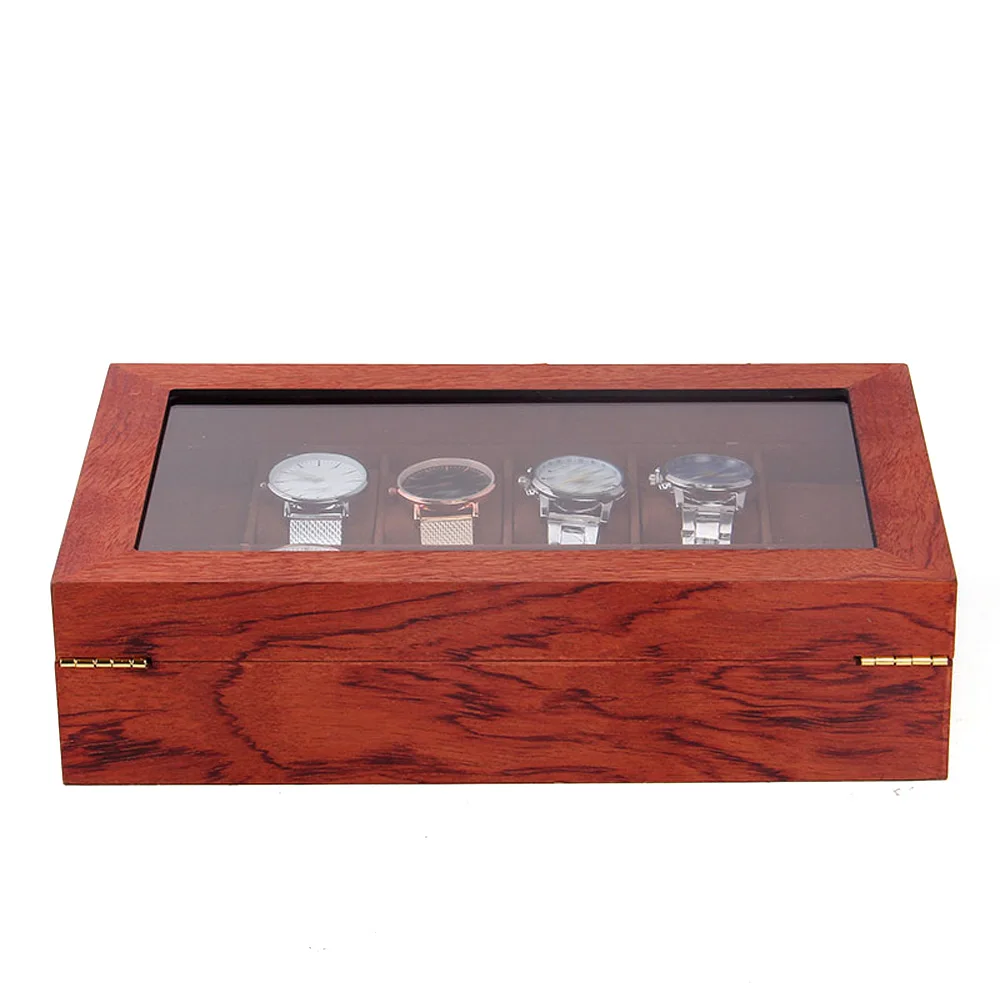
Troubleshooting Common Leather Watch Case Problems
Even with diligent care, leather watch cases may develop issues over time. Knowing how to address common problems quickly can prevent minor issues from becoming permanent damage.
Scratches and Scuffs
The severity of scratches determines the appropriate treatment:
Light Surface Scratches:
1. Clean the area with a slightly damp microfiber cloth
2. Apply a small amount of conditioner with your fingertip
3. Gently massage in circular motions until the scratch blends
4. Allow to dry, then buff lightly
Deeper Scratches:
1. Clean thoroughly with leather cleaner
2. Apply matching leather cream or polish with a soft cloth
3. Build up thin layers rather than one thick application
4. Allow each layer to dry completely before adding another
5. Buff gently between layers for best results
Severe Gouges:
For significant damage, professional repair is often the best solution. Attempting major repairs without proper tools and experience can worsen the situation and devalue premium cases.
Stiffness and Drying
When leather becomes stiff or appears dry:
- Clean thoroughly to remove any surface residue
- Apply a high-quality leather conditioner generously
- Allow longer absorption time than usual (30-60 minutes)
- Wipe away excess and allow to rest overnight
- Assess if a second application is needed
- For severe cases, use a specialized leather reviver product
Water Damage
Quick action is essential when addressing water exposure:
For Fresh Water Spots:
1. Blot (don’t rub) with an absorbent cloth
2. Allow to air dry naturally away from heat sources
3. Once completely dry, assess if conditioning is needed
For Extensive Water Damage:
1. Blot excess moisture immediately
2. Reshape the case if it has become misshapen
3. Allow to dry slowly at room temperature (24-48 hours)
4. Once completely dry, clean with leather cleaner
5. Apply conditioner to restore oils lost during drying
6. Assess if repair or replacement is needed for severe cases
Discoloration and Fading
Address color issues based on the cause:
Sunlight Fading:
1. Move the case away from light sources immediately
2. Clean thoroughly with appropriate leather cleaner
3. Apply color-restoring leather cream if available
4. Use leather protectant with UV inhibitors for future protection
Dye Transfer:
1. Clean promptly with leather cleaner
2. For stubborn stains, consult a professional leather specialist
3. Prevent future transfer by keeping colored items away from light-colored leather
Mold and Mildew
Fungal growth requires immediate attention:
- Move the case to a dry, well-ventilated area
- Using a cloth dampened with diluted isopropyl alcohol (70%), gently wipe affected areas
- Allow to dry completely in sunlight if possible (indirect sunlight for colored leather)
- Clean with leather cleaner once dry
- Apply leather conditioner after ensuring all mold is removed
- Add a fungicidal protectant to prevent recurrence
- Address the humidity issue in your storage area
Odor Problems
Unwanted smells in leather cases can be addressed through several approaches:
For Musty Odors:
1. Air out in a well-ventilated area for 24-48 hours
2. Place baking soda in a small open container inside the case for 24 hours
3. Remove the baking soda and wipe down interior with a slightly damp cloth
4. Allow to dry completely
For Strong Chemical Smells:
1. Air out for several days
2. Place activated charcoal packets inside for 2-3 days
3. Replace with fresh charcoal if needed until odor dissipates
Hardware Issues
Don’t overlook the metal components:
- Clean metal hardware with a soft cloth
- Use a specialized metal cleaner for tarnished elements
- Apply a light coat of mineral oil to hinges if they become stiff
- Avoid getting metal cleaners on surrounding leather
- For loose hardware, consult a professional rather than attempting repairs
Understanding these troubleshooting techniques allows you to address problems quickly before they become permanent damage, extending the life of your valuable leather watch cases.
Caring for Different Leather Types: Specialized Approaches
Each type of leather used in watch cases has unique characteristics that require specific care approaches. Understanding these differences ensures you’ll provide optimal maintenance for your particular case.
Full-Grain Leather
Considered the highest quality leather, full-grain retains the entire grain surface with all natural markings.
Care Considerations:
* More absorbent than processed leathers, requiring careful product application
* Develops a rich patina over time that enhances its character
* Shows natural variations and may develop character marks with age
Maintenance Approach:
1. Clean with gentle leather cleaner designed for natural leathers
2. Condition more frequently than processed leathers (every 2-3 months)
3. Apply conditioner sparingly as it absorbs quickly
4. Allow longer absorption time before buffing
5. Embrace the developing patina rather than trying to maintain “new” appearance
Top-Grain Leather
With the outermost layer sanded and refinished, top-grain offers more uniform appearance while maintaining good durability.
Care Considerations:
* More resistant to staining than full-grain
* Less absorbent due to processing
* More uniform in appearance and aging
Maintenance Approach:
1. Clean with standard leather cleaners
2. Condition less frequently than full-grain (every 3-4 months)
3. Use lighter applications of conditioner
4. Buff more vigorously to maintain surface sheen
5. Watch for wear on finished surface that might require touch-ups
Saffiano Leather
Recognizable by its cross-hatch pattern created through heat-stamping, Saffiano leather is treated for scratch and water resistance.
Care Considerations:
* Highly resistant to scratching and water spots
* Less breathable than natural leathers
* Maintains appearance longer without developing significant patina
Maintenance Approach:
1. Dust regularly as texture can trap particles
2. Clean with minimal moisture using specialized cleaners for treated leathers
3. Condition very lightly and infrequently (every 4-6 months)
4. Focus conditioning on edges and corners where treatment may wear first
5. Use protectants specifically formulated for finished leathers
Nappa Leather
Exceptionally soft and supple, Nappa leather undergoes minimal processing to preserve its luxurious feel.
Care Considerations:
* Very soft and potentially more vulnerable to scratching
* Absorbs products readily
* May show wear patterns earlier than more processed leathers
Maintenance Approach:
1. Clean with extra-gentle cleaner using minimal pressure
2. Condition moderately (every 3 months) to maintain softness
3. Apply conditioner with extra care to avoid oversaturation
4. Use leather protectant to help prevent premature wear
5. Handle with clean hands to prevent oil transfer
Exotic Leathers
Found in luxury watch boxes and high-end collections, exotic leathers like ostrich, crocodile, or lizard require specialized care.
Care Considerations:
* Often feature distinctive textures and natural patterns
* May have special treatments or finishes
* Generally more delicate than bovine leathers
Maintenance Approach:
1. Clean with products specifically formulated for exotic leathers
2. Use specialized exotic leather conditioners in very small amounts
3. Condition more frequently in dry environments (every 2-3 months)
4. Apply products with extra caution around scales or texture elements
5. Consider professional maintenance for valuable pieces
Suede and Nubuck
Though less common in watch cases, these brushed leathers sometimes appear as accents or linings.
Care Considerations:
* Highly susceptible to water damage and staining
* Cannot be treated with standard leather conditioners
* Texture is the primary appeal and must be preserved
Maintenance Approach:
1. Clean with a suede brush or eraser specifically designed for these leathers
2. Never apply liquid cleaners or conditioners
3. Use specialized suede protector sprays
4. Brush regularly to maintain nap and remove dust
5. Keep away from moisture at all costs
Understanding the specific needs of each leather type allows you to provide targeted care that enhances the natural properties of the material while addressing its unique vulnerabilities. This specialized approach ensures your leather watch cases remain in optimal condition regardless of the specific leather used in their construction.
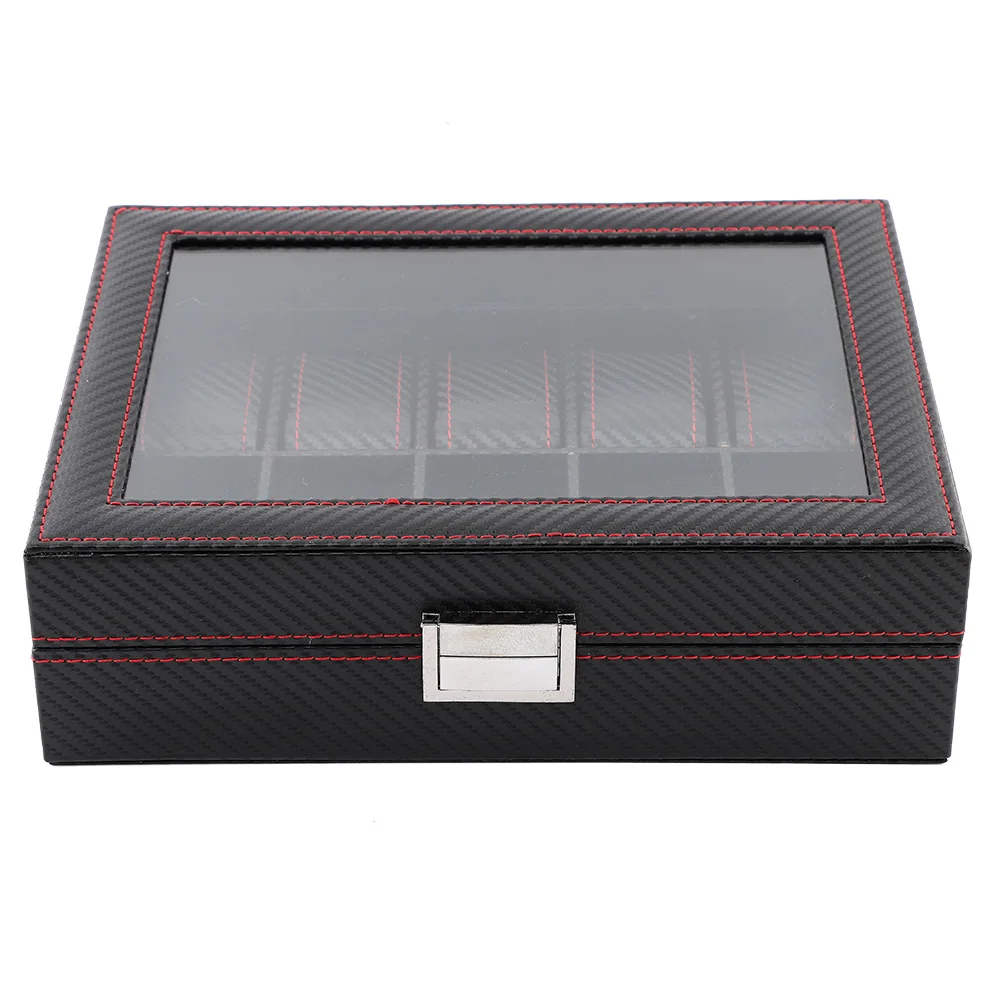
Maintenance Schedule: When to Perform Each Care Task
Establishing a regular maintenance schedule prevents small issues from becoming significant problems while ensuring your leather watch cases remain in peak condition. This timeline provides structure to your care routine, though you should adjust based on your specific case, environment, and usage patterns.
Daily Care (30 Seconds)
- Wipe with a clean, dry microfiber cloth to remove dust
- Inspect for new marks, stains, or damage
- Ensure proper closure of the case
Weekly Care (2-5 Minutes)
- More thorough dusting of exterior surfaces and crevices
- Gentle brushing of seams and textured areas
- Quick check of hardware functionality
- Inspection of interior lining condition
Monthly Care (10-15 Minutes)
- Surface cleaning with appropriate leather cleaner
- Hardware inspection and gentle cleaning if needed
- Light conditioning of high-touch areas (handles, edges)
- Assessment of storage conditions and adjustments as needed
Quarterly Care (30-45 Minutes)
- Complete cleaning of exterior and interior surfaces
- Full conditioning treatment
- Application of leather protectant
- Hardware maintenance
- Thorough inspection for any developing issues
Bi-Annual Deep Care (1-2 Hours)
- Deep cleaning of all surfaces
- Treatment of any scuffs or minor damage
- Comprehensive conditioning
- Protectant application
- Assessment of overall condition and structural integrity
Environmental Adjustments
Modify this schedule based on your specific circumstances:
Humid Environments:
* Increase inspection frequency to watch for mold/mildew
* Reduce conditioning frequency to prevent over-saturation
* Increase protectant application frequency
Dry Environments:
* Increase conditioning frequency
* Monitor for cracking or excessive dryness
* Consider using humidity control in storage areas
Heavy Use Scenarios:
* Increase cleaning frequency for exterior surfaces
* Condition high-touch areas more frequently
* Inspect hardware functionality more often
Signs That Indicate Maintenance Is Needed
Regardless of schedule, take action when you observe:
- Visible dryness or stiffness in the leather
- Dull appearance where it was once lustrous
- Water no longer beading on the surface
- Visible dirt accumulation
- Any new scuffs or marks
- Unusual odors
- Stiff or squeaky hinges
Implementing scheduled leather watch box maintenance creates a proactive approach to care rather than reacting to problems after they develop. This systematic strategy ensures your leather watch cases receive appropriate attention while minimizing the risk of overlooking important care steps.
Watch Accessories, Watch Holder
$94.51 Select options This product has multiple variants. The options may be chosen on the product pageLuxury Watch Boxes, Men's Watch Boxes, Single Watch Box
Price range: $903.35 through $980.97 Select options This product has multiple variants. The options may be chosen on the product pageSingle Watch Travel Case, Watch and Jewelry Box, Watch Roll Travel Case
Price range: $93.44 through $140.65 Select options This product has multiple variants. The options may be chosen on the product pageLuxury Watch Boxes, Luxury Watch Travel Case
Price range: $200.33 through $224.57 Select options This product has multiple variants. The options may be chosen on the product pageLeather Watch Travel Case, Men's Watch Travel Case, Watch Roll Travel Case
Price range: $91.37 through $92.63 Select options This product has multiple variants. The options may be chosen on the product pageWatch Organizer, Watch Roll Travel Case
Price range: $88.39 through $99.36 Select options This product has multiple variants. The options may be chosen on the product page
Frequently Asked Questions About Leather Watch Case Care
Can I use household cleaners on my leather watch case?
No, household cleaners typically contain harsh chemicals that damage leather. Most contain alcohol, ammonia, or detergents that strip natural oils from leather, causing drying and cracking. Always use cleaners specifically formulated for fine leather, which maintain the material’s natural pH balance and preserve its essential oils.
How often should I condition my leather watch case?
Conditioning frequency depends on several factors including usage, environment, and leather type. As a general rule, condition every 3-4 months in normal conditions. Increase to every 2-3 months in very dry environments or with frequently handled cases. Decrease to every 6 months for cases in stable, climate-controlled environments. Always condition based on the leather’s appearance and feel—if it looks dry or feels stiff, it needs conditioning regardless of schedule.
What should I do if my leather watch case gets completely wet?
Act quickly to minimize damage. First, blot (don’t rub) with an absorbent cloth to remove excess moisture. Reshape if needed, then allow to dry naturally at room temperature away from heat sources—never use a hairdryer or place near a heater, as this causes uneven drying and cracking. Once completely dry (usually 24-48 hours), clean with leather cleaner, then apply conditioner to restore oils lost during the drying process. For severe water damage, consult a leather care professional.
Will sun exposure damage my leather watch case?
Yes, sunlight is extremely damaging to leather. UV rays break down leather fibers and fade colors, while the heat dries out essential oils. Even brief but regular exposure can cause significant deterioration. Store leather cases away from direct sunlight and windows. If your case has already suffered sun damage, conditioning may help restore moisture, but color fading is usually permanent.
Can I store my leather watch case in a closet or drawer?
Yes, closets and drawers can be appropriate storage locations if they maintain stable temperature and moderate humidity. Avoid overcrowded spaces where the case might be compressed or damaged. For long-term storage, use a dust cover and ensure the environment isn’t prone to excessive dryness, humidity, or temperature fluctuations. Periodically air out the case to prevent mustiness.
How do I know if I’m over-conditioning my leather?
Over-conditioned leather feels greasy or tacky to the touch rather than simply soft and supple. It may have a darkened appearance and excessive shine. The surface might attract and hold dust more readily than before. If you notice these signs, stop conditioning immediately and gently wipe the surface with a clean, dry cloth to remove excess product. Allow several weeks before considering any additional conditioning.
Can I use shoe polish on my leather watch case?
No, shoe polish typically contains dyes and waxes designed for footwear, not fine leather accessories. These formulations can oversaturate the leather, create buildup in seams and corners, and potentially transfer to watches or clothing. Instead, use products specifically designed for fine leather goods that provide appropriate conditioning without excessive waxes or inappropriate colorants.
Can wearing leather watches daily affect how I should care for my leather case?
Daily watch rotation affects both your watches and their storage case. For cases used daily, increase cleaning frequency to address oils transferred from hands and watches. Pay special attention to the interior compartments and cushions that contact watches regularly. Consider more frequent conditioning of high-touch areas like clasps and handles. The constant opening and closing also puts stress on hinges and closure mechanisms, so inspect these components regularly.
Selecting Quality Leather Care Products: What to Look For
The market is flooded with leather care products, from budget options to premium formulations. Choosing the right products significantly impacts your leather watch case’s longevity and appearance. Here’s how to identify quality options:
Beneficial Ingredients
Quality leather care products typically contain:
- Natural oils – Neatsfoot oil, mink oil, and jojoba oil penetrate leather fibers effectively
- Beeswax – Provides gentle protection while allowing leather to breathe
- Lanolin – Closely resembles leather’s natural lubricants
- Carnauba wax – Offers protection without excessive buildup
- Natural fats – Restore suppleness without synthetic residues
Harmful Ingredients to Avoid
Stay away from products containing:
- Silicone – Creates temporary shine but prevents leather from breathing
- Petroleum distillates – Can damage stitching and accelerate drying long-term
- Mineral oil – May provide initial softness but causes drying over time
- Excessive alcohols – Strip natural oils and dry out leather fibers
- Heavy synthetic waxes – Create buildup that attracts dust and can crack
Quality Indicators
When evaluating leather care products:
- Mild, natural fragrance – Quality products typically have a subtle, pleasant smell
- Proper consistency – Not too runny or excessively thick
- Appropriate absorption – Should absorb into leather without leaving sticky residue
- Minimal ingredient list – Often, fewer ingredients indicate a more focused formulation
- Clear usage instructions – Quality manufacturers provide specific application guidance
- Specialized formulations – Products designed for specific leather types often perform better
Finding the Right Product for Your Leather Type
Different leather finishes require specific product types:
- Natural, unfinished leathers – Use products with higher oil content
- Finished leathers – Select lighter formulations with more waxes than oils
- Exotic leathers – Require specialized products formulated for their unique structures
- Antiqued or distressed finishes – Need products that maintain character without filling texture
Patch Testing
Before applying any new product to your entire leather case:
- Select an inconspicuous area (bottom corner or interior)
- Apply a small amount of product
- Allow to fully absorb according to product directions
- Check for adverse reactions (darkening, discoloration, texture change)
- Wait 24 hours to ensure delayed reactions don’t occur
High-quality leather care accessories and products are a worthwhile investment for maintaining valuable watch cases. The watch accessories you choose can significantly impact the appearance and longevity of your leather goods. While premium products may cost more initially, they typically yield better results, require smaller amounts per application, and help avoid expensive repairs or replacements.
Extending the Life of Your Premium Leather Watch Case
The ultimate goal of leather care is longevity—preserving your beautiful watch case so it continues protecting and showcasing your timepieces for years to come. These advanced strategies go beyond basic maintenance to maximize the lifespan of your leather watch cases.
Preventative Mastery
Prevention remains the most effective form of leather care:
- Develop consistent handling habits – Always wash hands before touching leather cases
- Create stable microenvironments – Use humidity control packets in storage areas
- Implement rotation systems – If you own multiple cases, rotate their use to prevent wear concentration
- Anticipate seasonal changes – Proactively adjust care routines before seasonal shifts occur
- Master preventative cleaning – Address small issues immediately before they become permanent
Advanced Preservation Techniques
Professional leather artisans employ these preservation methods:
- Edge coating maintenance – Apply edge coat sealer to prevent fraying on case edges
- Strategic reinforcement – Use leather balm more frequently on stress points like corners and handles
- Humidity monitoring – Use digital hygrometers to maintain optimal humidity levels
- Leather-safe dust removal systems – Use leather-specific vacuum attachments for deep dust removal
- Professional assessment – Schedule occasional evaluation by leather care experts
Rotation and Rest
Like fine watches themselves, leather cases benefit from periods of rest:
- Rotate between multiple cases if possible
- Allow at least 24 hours of “rest” between uses for frequently used cases
- During rest periods, leave cases open to allow air circulation
- Use this time for light conditioning of high-wear areas
Preservation techniques for leather storage extend beyond the cases themselves to the watches they contain. Quality cases not only look beautiful but provide essential protection for your timepieces from dust, humidity fluctuations, and physical damage. The relationship is symbiotic—properly maintained watches don’t transfer oils or compounds that might damage leather, while well-maintained leather cases provide optimal protection for the watches.
Material Considerations
Understanding how leather interacts with other materials enhances preservation:
- Wood and leather combinations – Wood and leather watch boxes require balanced care approaches for both materials
- Metal hardware – Prevent metal oils and polishes from contacting leather
- Interior fabrics – Regularly air and inspect fabric linings that may trap moisture
- Watch cushions – Clean or replace cushions that show signs of compression or soiling
Value Preservation
Beyond aesthetics and function, proper leather care significantly impacts resale value. Well-maintained leather cases can maintain or even increase in value, particularly for limited editions or discontinued styles. Documentation of care (keeping records of products used and maintenance performed) can further enhance resale value for collectors and enthusiasts.
By implementing these advanced strategies alongside regular maintenance routines, your premium leather watch cases will continue to protect and showcase your timepiece collection beautifully for decades. The care you invest reflects the same appreciation for craftsmanship that likely drew you to fine watches in the first place.
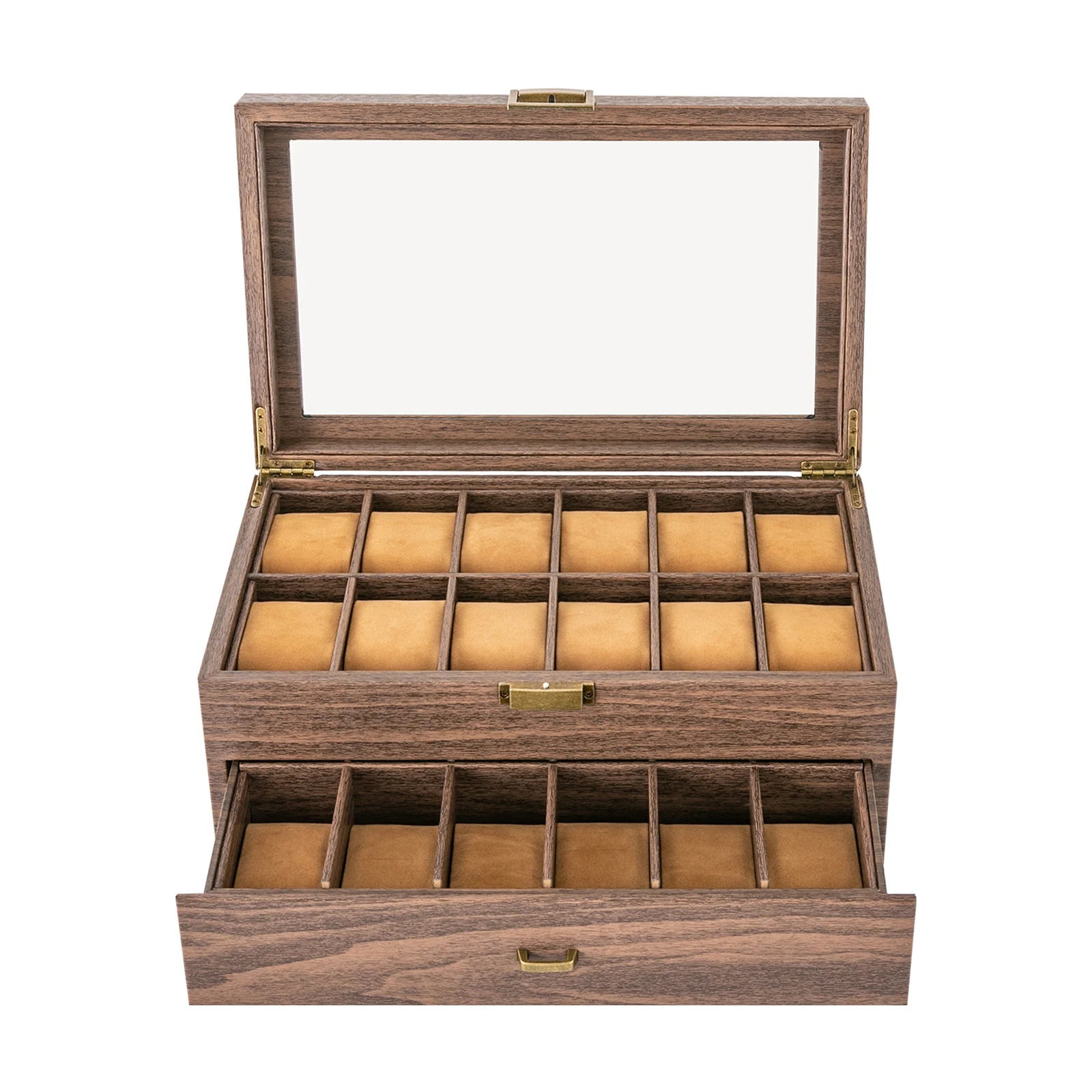
Frequently Asked Questions About Leather Watch Case Care
Can I use household cleaners on my leather watch case?
No, household cleaners typically contain harsh chemicals that damage leather. Most contain alcohol, ammonia, or detergents that strip natural oils from leather, causing drying and cracking. Always use cleaners specifically formulated for fine leather, which maintain the material’s natural pH balance and preserve its essential oils.
How often should I condition my leather watch case?
Conditioning frequency depends on several factors including usage, environment, and leather type. As a general rule, condition every 3-4 months in normal conditions. Increase to every 2-3 months in very dry environments or with frequently handled cases. Decrease to every 6 months for cases in stable, climate-controlled environments. Always condition based on the leather’s appearance and feel—if it looks dry or feels stiff, it needs conditioning regardless of schedule.
What should I do if my leather watch case gets completely wet?
Act quickly to minimize damage. First, blot (don’t rub) with an absorbent cloth to remove excess moisture. Reshape if needed, then allow to dry naturally at room temperature away from heat sources—never use a hairdryer or place near a heater, as this causes uneven drying and cracking. Once completely dry (usually 24-48 hours), clean with leather cleaner, then apply conditioner to restore oils lost during the drying process. For severe water damage, consult a leather care professional.
Will sun exposure damage my leather watch case?
Yes, sunlight is extremely damaging to leather. UV rays break down leather fibers and fade colors, while the heat dries out essential oils. Even brief but regular exposure can cause significant deterioration. Store leather cases away from direct sunlight and windows. If your case has already suffered sun damage, conditioning may help restore moisture, but color fading is usually permanent.
Can I store my leather watch case in a closet or drawer?
Yes, closets and drawers can be appropriate storage locations if they maintain stable temperature and moderate humidity. Avoid overcrowded spaces where the case might be compressed or damaged. For long-term storage, use a dust cover and ensure the environment isn’t prone to excessive dryness, humidity, or temperature fluctuations. Periodically air out the case to prevent mustiness.
How do I know if I’m over-conditioning my leather?
Over-conditioned leather feels greasy or tacky to the touch rather than simply soft and supple. It may have a darkened appearance and excessive shine. The surface might attract and hold dust more readily than before. If you notice these signs, stop conditioning immediately and gently wipe the surface with a clean, dry cloth to remove excess product. Allow several weeks before considering any additional conditioning.
Can I use shoe polish on my leather watch case?
No, shoe polish typically contains dyes and waxes designed for footwear, not fine leather accessories. These formulations can oversaturate the leather, create buildup in seams and corners, and potentially transfer to watches or clothing. Instead, use products specifically designed for fine leather goods that provide appropriate conditioning without excessive waxes or inappropriate colorants.
Can wearing leather watches daily affect how I should care for my leather case?
Daily watch rotation affects both your watches and their storage case. For cases used daily, increase cleaning frequency to address oils transferred from hands and watches. Pay special attention to the interior compartments and cushions that contact watches regularly. Consider more frequent conditioning of high-touch areas like clasps and handles. The constant opening and closing also puts stress on hinges and closure mechanisms, so inspect these components regularly.

